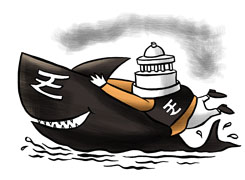Ramalingam Kalirajan |9778 Answers |Ask -Follow
Mutual Funds, Financial Planning Expert - Answered on Jul 15, 2024
He has an MBA in finance from the University of Madras and is a certified financial planner.
He is the director and chief financial planner at Holistic Investment, a Chennai-based firm that offers financial planning and wealth management advice.... more

Hi I am 39 years old and my CTC is 20 LPA. Please suggest investment plan for '0' tax
Tax Planning Basics
Understanding tax laws and available deductions is the first step. Here's a breakdown of key sections that can help you save tax:
Section 80C
You can claim deductions up to Rs. 1.5 lakhs under Section 80C. This includes:
Public Provident Fund (PPF): A safe investment with tax-free interest and good returns.
Employee Provident Fund (EPF): Contributions to EPF are tax-exempt and grow steadily.
Equity-Linked Savings Scheme (ELSS): These mutual funds offer tax deductions and the potential for high returns, with a three-year lock-in period.
Life Insurance Premiums: Premiums paid for life insurance policies qualify for tax deductions under this section.
Tuition Fees: Payments towards children's tuition fees are also eligible.
Section 80D
You can claim deductions for health insurance premiums:
Self, Spouse, and Children: Up to Rs. 25,000.
Parents: An additional Rs. 25,000 for parents under 60, and Rs. 50,000 for parents above 60.
Section 80CCD(1B)
Contributions to the National Pension System (NPS) offer an extra deduction of Rs. 50,000, in addition to the Rs. 1.5 lakhs under Section 80C.
Section 24(b)
Interest paid on home loan EMIs is deductible up to Rs. 2 lakhs for a self-occupied property.
Investment Strategy for Tax Saving
A well-rounded investment strategy not only saves tax but also builds wealth over time.
Equity-Linked Savings Scheme (ELSS)
ELSS funds are a popular choice due to their dual benefits of tax saving and wealth creation. They have a lock-in period of three years and invest primarily in equities, offering the potential for high returns.
Public Provident Fund (PPF)
PPF is a long-term investment with a 15-year tenure. The interest earned is tax-free, and it offers a safe and steady return.
National Pension System (NPS)
NPS provides an additional tax benefit under Section 80CCD(1B). It also helps in building a retirement corpus. The funds in NPS are managed by professional fund managers, offering a mix of equity and debt exposure.
Insurance for Tax Saving
Term Insurance
Term insurance is a cost-effective way to secure your family’s future. Premiums paid are deductible under Section 80C.
Health Insurance
Health insurance premiums are deductible under Section 80D. It is essential to have adequate health coverage to protect against medical emergencies.
Retirement Planning
Planning for retirement is crucial. Here are some options to consider:
Employee Provident Fund (EPF)
Continue contributing to EPF for tax-free growth and retirement savings.
National Pension System (NPS)
NPS is a tax-efficient way to save for retirement. It allows you to choose your investment mix and offers additional tax benefits.
Children's Education and Marriage
Investing for your children’s future is important. Here’s how you can plan:
Sukanya Samriddhi Yojana
If you have a daughter, this scheme offers high interest and tax benefits. It is designed to secure her future.
Mutual Funds
Create a portfolio with a mix of equity and debt funds. This balances growth and safety, ensuring funds for education and marriage.
Benefits of Actively Managed Funds
Professional Management
Actively managed funds are handled by professional fund managers who aim to outperform the market.
Flexibility
These funds can adjust their strategies based on market conditions, potentially offering higher returns.
Diversification
Actively managed funds invest across various sectors and assets, reducing risk through diversification.
Disadvantages of Index Funds
Lack of Flexibility
Index funds passively track a market index, which limits their ability to respond to market changes.
Potential Underperformance
In volatile markets, index funds may underperform compared to actively managed funds.
Disadvantages of Direct Funds
Lack of Guidance
Direct funds might have lower costs but lack professional advice. This can lead to suboptimal investment decisions.
Time-Consuming
Managing investments on your own requires time and expertise. Investing through a Mutual Fund Distributor (MFD) with a Certified Financial Planner (CFP) offers convenience and professional guidance.
Avoiding Common Pitfalls
Over-Reliance on Insurance Products
Avoid investment-cum-insurance products like ULIPs and endowment plans. They often offer lower returns and high costs. Instead, invest in mutual funds for growth and buy term insurance for protection.
Building an Emergency Fund
An emergency fund is essential. It should cover 6-12 months of living expenses. Keep this fund in a savings account or liquid mutual funds for easy access.
Final Insights
Creating a zero-tax investment plan is not realistic, but you can significantly reduce your tax liability with strategic planning. Leveraging tax-saving instruments, diversifying your portfolio, and ensuring adequate insurance are key steps.
Remember, the key to successful investing is consistency and patience. Regularly review and adjust your portfolio with the help of a Certified Financial Planner to stay on track.
Best Regards,
K. Ramalingam, MBA, CFP
Chief Financial Planner
www.holisticinvestment.in
You may like to see similar questions and answers below
Mahesh Padmanabhan | Answer |Ask -Follow
Tax Expert - Answered on Feb 04, 2023
Sanjeev Govila | Answer |Ask -Follow
Financial Planner - Answered on Feb 03, 2023
Vivek Lala | Answer |Ask -Follow
Tax, MF Expert - Answered on Mar 11, 2023
Hardik Parikh | Answer |Ask -Follow
Tax, Mutual Fund Expert - Answered on Aug 22, 2023
Ramalingam Kalirajan |9778 Answers |Ask -Follow
Mutual Funds, Financial Planning Expert - Answered on Jun 11, 2024
Radheshyam Zanwar |5554 Answers |Ask -Follow
MHT-CET, IIT-JEE, NEET-UG Expert - Answered on Jul 18, 2025
Radheshyam Zanwar |5554 Answers |Ask -Follow
MHT-CET, IIT-JEE, NEET-UG Expert - Answered on Jul 18, 2025
Patrick Dsouza |1315 Answers |Ask -Follow
CAT, XAT, CMAT, CET Expert - Answered on Jul 18, 2025
Radheshyam Zanwar |5554 Answers |Ask -Follow
MHT-CET, IIT-JEE, NEET-UG Expert - Answered on Jul 18, 2025
Patrick Dsouza |1315 Answers |Ask -Follow
CAT, XAT, CMAT, CET Expert - Answered on Jul 18, 2025
Radheshyam Zanwar |5554 Answers |Ask -Follow
MHT-CET, IIT-JEE, NEET-UG Expert - Answered on Jul 18, 2025
Radheshyam Zanwar |5554 Answers |Ask -Follow
MHT-CET, IIT-JEE, NEET-UG Expert - Answered on Jul 18, 2025
Radheshyam Zanwar |5554 Answers |Ask -Follow
MHT-CET, IIT-JEE, NEET-UG Expert - Answered on Jul 18, 2025
Radheshyam Zanwar |5554 Answers |Ask -Follow
MHT-CET, IIT-JEE, NEET-UG Expert - Answered on Jul 18, 2025
Ramalingam Kalirajan |9778 Answers |Ask -Follow
Mutual Funds, Financial Planning Expert - Answered on Jul 18, 2025






















